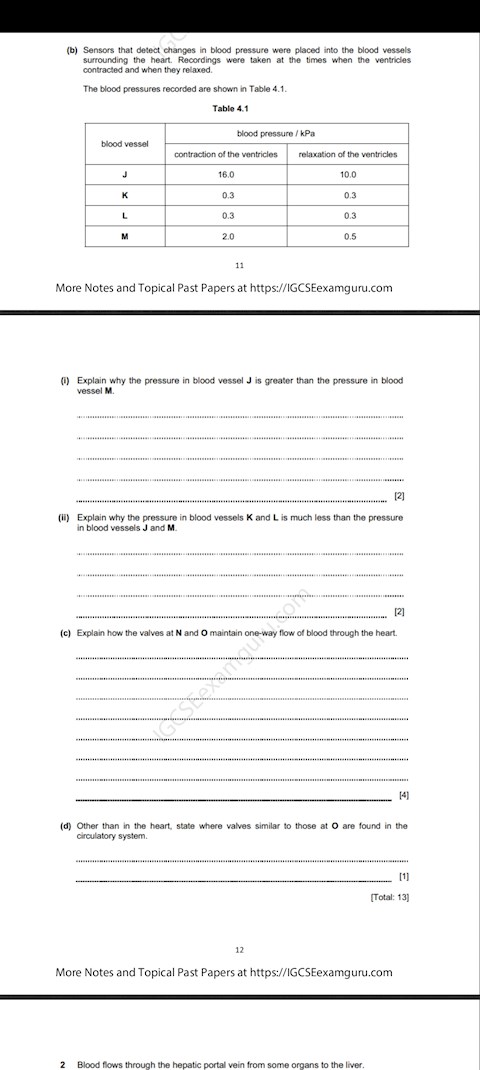>
#sensors
,
#healthcare
>
Sensors that detect changes in blood pressure were placed into the blood vessels surrounding the heart. Recordings were taken at the times when the ventricles contracted and when they relaxed?

Chantelle Fadzai Kashava
Jun 22, 2023
Sensors that detect changes in blood pressure were placed into the blood vessels surrounding the heart. Recordings were taken at the times when the ventricles contracted and when they relaxed?

2 answers
Sort By
Anonymous
Jun 22, 2023
(i) The pressure in blood vessel J is greater than the pressure in blood vessel M due to the physiological changes that occur during the contraction and relaxation of the ventricles.
During ventricular contraction (systole), the heart pumps blood into the arteries, resulting in increased pressure within the blood vessels. This increase in pressure is necessary to push blood forward and circulate it throughout the body. Blood vessel J, being closer to the heart, experiences the highest pressure during ventricular contraction. This is because it is in direct proximity to the site where the blood is forcefully expelled from the heart into the arteries.
On the other hand, during ventricular relaxation (diastole), the heart is in a resting phase, and blood is flowing back to the heart from various parts of the body. The pressure within the blood vessels decreases as the blood returns to the heart, preparing for the next cardiac cycle. Blood vessel M, being further away from the heart, experiences lower pressure during ventricular relaxation compared to blood vessel J.
Therefore, the pressure in blood vessel J is greater than the pressure in blood vessel M because blood vessel J is closer to the heart and experiences the highest pressure during ventricular contraction when the heart is actively pumping blood into the arteries.
1
Anonymous
Jun 22, 2023
(ii) The pressure in blood vessel K and L being much less than the pressure in blood vessels J and M could be attributed to their location and function in the cardiovascular system.
Blood vessel J, as mentioned earlier, is closer to the heart and experiences higher pressure during ventricular contraction. It is located near the site where blood is forcefully expelled from the heart into the arteries, resulting in a higher pressure reading.
Blood vessel M, although farther away from the heart compared to J, still experiences a significant pressure during ventricular contraction due to its proximity to the arterial system. However, during ventricular relaxation, the pressure in blood vessel M drops as blood flows back to the heart from various parts of the body.
Blood vessels K and L, on the other hand, may be located further away from the heart compared to J and M. They could be part of the venous system, which carries deoxygenated blood back to the heart. Veins generally have lower pressure compared to arteries because their walls are thinner and less muscular. Additionally, during ventricular relaxation, the pressure in veins further decreases as blood flows back to the heart with reduced force.
Therefore, the pressure in blood vessels K and L is much less than the pressure in blood vessels J and M due to their location, their role in the cardiovascular system (possibly as veins), and the changes in pressure that occur during the cardiac cycle.
2